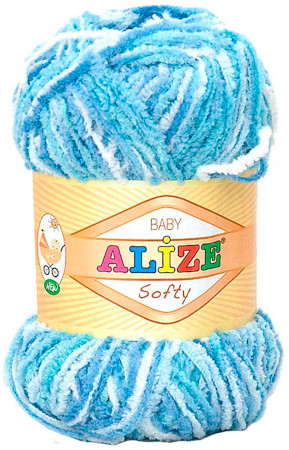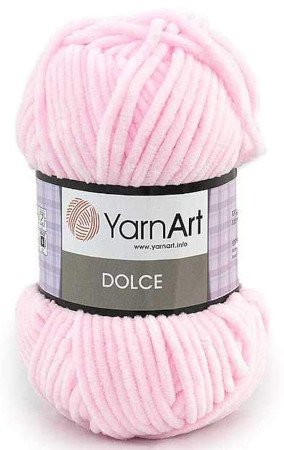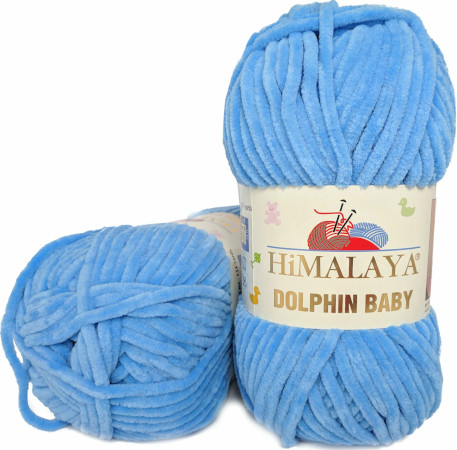Many needlewomen use wool yarn when creating blankets. It is warm, is available in many craft stores, and some brands of plush yarn are not that expensive.
However, some people cannot buy wool blankets because of wool allergies or sensitive skin. Therefore, craftswomen often knit blankets from plush yarn. Such a blanket can also be bought for a newborn, it will not harm the baby's skin.
How to choose yarn and knitting needles
Plush yarn also has another name - chenille, velour. It consists of polyester, micropolyester. The thread of such yarn is even, dense, is a uniformly twisted silky pile, twisted around the base thread. Since it is well dyed, it is presented in a wide range of colors in stores.
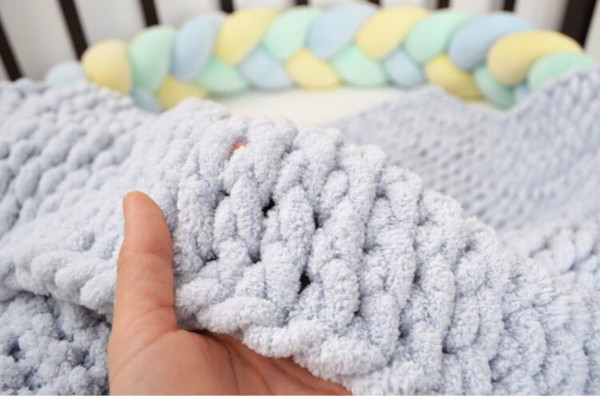
When choosing plush yarn for a blanket, you need to remember that children's skin is very sensitive.
For this reason, children are recommended to knit things with knitting needles from the following brands of thread:
- Alize soft;
- Yarn art Dolce:
- Yarn art Chenille;
- Himalaya Dolphin baby;
- Kamtex;
- and others.
A blanket knitted from such yarn is soft and pleasant to the touch. Chenille products do not cause allergies, they are suitable for children's blankets. They are resistant to color fading, so you can please your child with a bright blanket made in his favorite color.
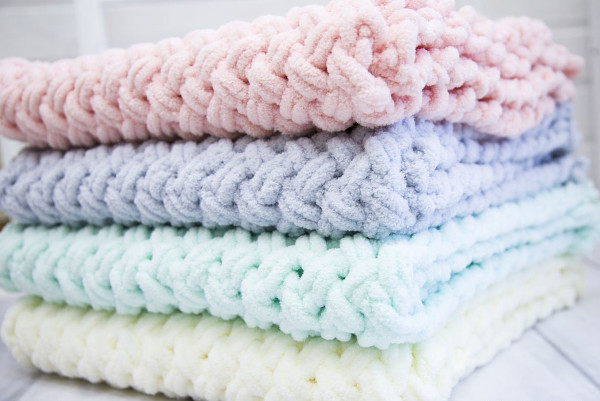
It is important to remember that you need to knit with plush yarn very carefully: if you unravel and re-tie a product made from it several times, the fibers may fall out and the blanket made from it will look worse. Therefore, you need to be careful when knitting a blanket from chenille.
A blanket made of plush yarn can be knitted with knitting needles from yarn marked BABY. This is how yarn is marked that is used for knitting children's products directly. Yarn with this mark is very soft and airy.
| Alize softy BABY
| The yarn is made of 100% micropolyester, which does not irritate the skin. For knitting, you will need needles No. 3 - 5. It is not recommended to knit too loosely. For a blanket for a stroller, you will need about 300 g of yarn. For a large blanket, for example, for a crib, you may need about 1 kg of yarn from this company. |
| Yarn art Dolce
| There are 2 types of this yarn: Dolce Baby and Dolce maxi. Their only difference is the thickness of the thread. Thus, the yarn contains micropolyester. The advantage of the thicker version of Yarn art is the knitting speed: a blanket from such yarn is knitted faster than from thinner options. It requires knitting needles No. 12. For medium-thickness yarn, knitting needles No. 4.5 are required. Yarn with the BABY designation is thinner, but just as soft and pleasant to the touch. It is often used for knitting children's things. To work with it, knitting needles No. 4.5 - 5 are also required. |
| Yarn art Velour
| Its texture resembles Yarn art Dolce yarn. It consists of micropolyester, like other types of chenille. It is recommended to use knitting needles No. 5.5 for it. |
| Himalaya Dolphin baby
| The yarn is made of 100% polyester. It is quite warm, it allows the skin to breathe and lets water through. The only drawback of this type of yarn is its friability. If you unravel a product from it even once, the thread will already crumble. |
| Kamtex
| The yarn consists of 100% microfiber. It is often used for knitting blankets for children. To knit with this yarn, you will need knitting needles No. 3.5 - 5. This yarn also allows air and water to pass through well. |
Knitting needles can be divided into several types:
- Straight — most often they are used for knitting blankets. Limiting blocks are installed at the ends of such knitting needles.
- Circular — are used to knit round items, such as hats, and can also be used to knit straight fabrics. They are connected to each other with a strong thread.
- Hosiery - with their help you can knit stockings (socks) in a circle. Such knitting needles are short, they are sold in 4-5 pieces.
- Auxiliary — they are not used to knit the main part of the product, they can be used to knit individual parts, for example, the thumb of a glove. Such knitting needles are short, they can be curved.
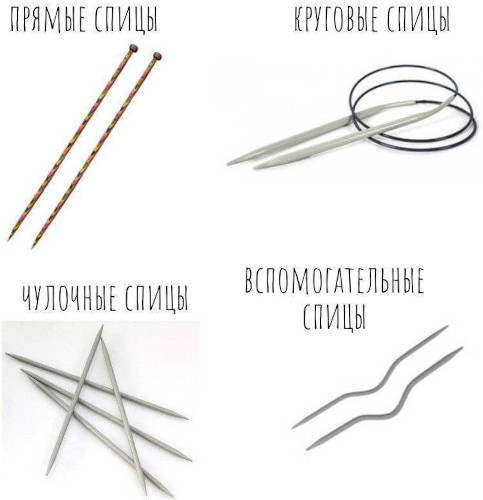
When choosing knitting needles, you also need to understand that their size should match the thickness of the yarn. If the knitting needles are too thick, the fabric will be fuzzy and loose. Excessively thin knitting needles will make the fabric too dense and tight. Therefore, you need to pay attention to the number of knitting needles, which is usually indicated on the skein of yarn.
The length of the needles is also important. When knitting a wide blanket, it is recommended to take long needles so that the loops do not slip off and the fabric does not unravel. You can take circular needles so that the fabric hangs on them in small folds.
The material the needles are made of is also important. Needles can be metal, wooden, for example, bamboo, plastic. They all suit different types of yarn. So, for soft plush yarn, it is recommended to buy metal needles. They are strong, durable, and the delicate plush yarn will not cling to them.
Patterns for blankets made of plush yarn
Many needlewomen choose simple patterns for blankets made of plush yarn. You don't have to choose complicated patterns, because even the simplest design will look beautiful on this yarn.
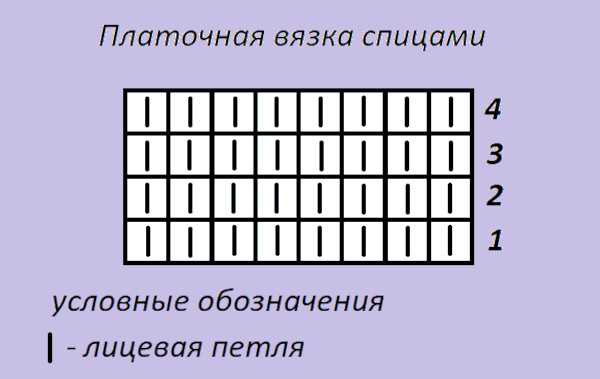
A blanket made of plush yarn can be knitted with garter stitch. This pattern is considered one of the simplest and most frequently used. To make such a pattern, you need to knit only face loops in each row. They will make the blanket textured and embossed.
The next pattern option is alternating purl and knit stitches. The essence of the pattern is to change the order of stitches in each new row. The pattern can be made more complex by alternating stitches in different ways. An example of a more complex alternation of knit and purl stitches is the pearl pattern.

You can alternate the loops in a checkerboard pattern, for example, 5 loops to 5 loops. In height, 5 rows are made, after which the alternation changes: knits are knitted over purl, and purl over knit. The number of loops can be changed at the craftswoman's discretion.

The rice pattern can consist of a different number of loops. The essence of the pattern is in the method of knitting the front and back loops.
- Each row should begin with an edge loop.
- Next, alternating front and back loops are knitted.
- The next row is a repetition of the previous one.
- In the 3rd row, you need to change the alternation: knit a purl stitch over the front loop of the previous row, and knit a front stitch over the back loop of the previous row.
Blanket with a voluminous pattern
Cones can be considered volumetric patterns. They can be knitted from a different number of loops. For example, you can knit a cone from 5 loops.

It is performed as follows:
- From one loop, knit 5 loops: 1 front loop, yarn over, front loop again, yarn over and front loop.
- Repeat this knitting for the next 4 rows.
- Knit these stitches together.
The disadvantage of this method is the hole that forms after knitting.
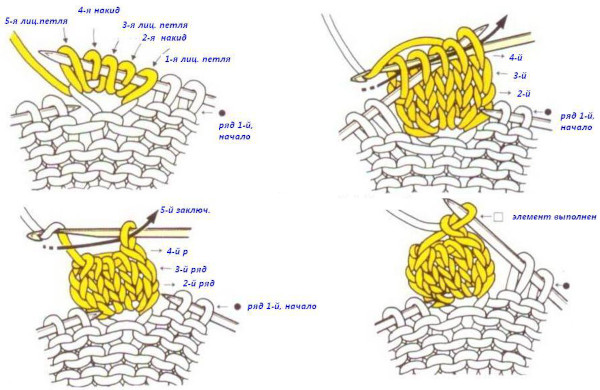
To remove this hole, you need to:
- From the loop that serves as the base of the bobble, knit the front one. Do not remove the loop from the knitting needle.
- Knit another front loop from the loop on the left knitting needle.
- From the same loop, knit a front loop through the front part, knit the next front loop through the back wall.
- Repeat until there are 5 stitches on the needle.
- Then turn the work and knit 5 purl stitches, turn again, knit 5 front stitches.
- Repeat step 5 for 4 more rows.
- Finish row 4 on the front side.

- Consecutively decrease the loops, passing the penultimate loop through the outer loop with the left knitting needle.
- Continue decreasing until the last stitch remains on the needle.
Plush blanket with knitting needles with crossed loops
Patterns consisting of crossed loops include braiding and honeycomb. Some craftswomen knit these patterns by hand, while others use knitting needles. A blanket made of plush yarn knitted with knitting needles is a popular gift for a child. Among all the patterns, many needlewomen most often choose a pattern such as braiding. It consists of only 2 rows.
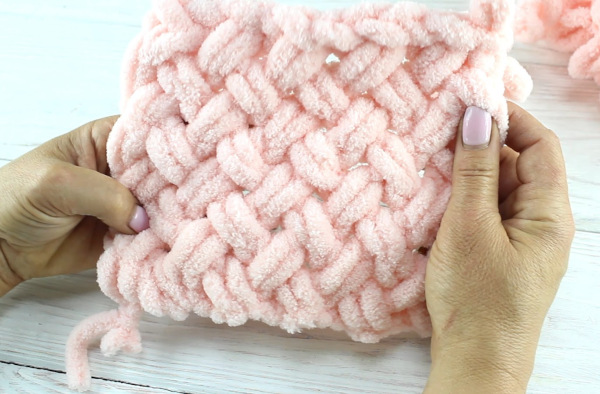
So, to knit a blanket with a braided crossed pattern, you should:
- Cross 2 loops to the left.
- Knit 1, cross 2 stitches to the right, knit the last stitch.
More experienced craftswomen can create blankets with a braid pattern. Due to the texture of the yarn, not all patterns may look neat, but if you choose a thinner yarn, you can achieve the desired result.
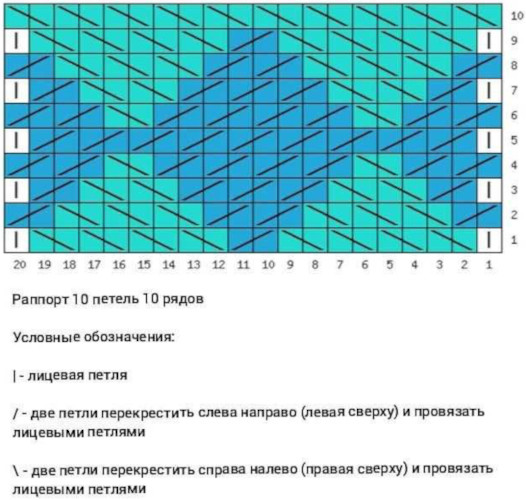
A 2-row braid can be knitted as follows:
- In the 1st row, knit all stitches.
- Cross 2 loops to the left until the end of the row.
Honeycomb is a three-dimensional pattern, also consisting of crossed loops.
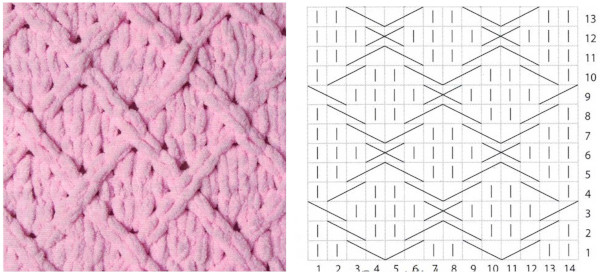
You need to knit it, focusing on the following steps:
- In row 1, knit 1 stitch, then cross 2 stitches to the right, 2 stitches to the left, 2 stitches. Repeat crossing stitches to the end of the row. Close the knitting in the row with a stitch.
- In the 2nd row, cross 2 loops to the left, knit 2, cross 2 loops to the right. Repeat this step until the end of the row.
- In the 3rd row, knitting begins with crossing 2 loops to the left, knit 2, cross 2 loops to the right. Continue knitting like this until the end of the row.
- Start this row with a knit stitch, cross 2 stitches to the right, cross 2 stitches to the left, knit 2 knit stitches. Finish the row with a knit stitch.
It is necessary to remember that plush blankets have 2 sides - the back and the front. If you need a double-sided blanket, you need to knit with garter stitch. In this case, all rows will be front.
Beautiful blankets knitted from plush threads
You can knit a blanket with a beautiful relief pattern reminiscent of a horseshoe from plush threads. You will need thin plush yarn for the work.
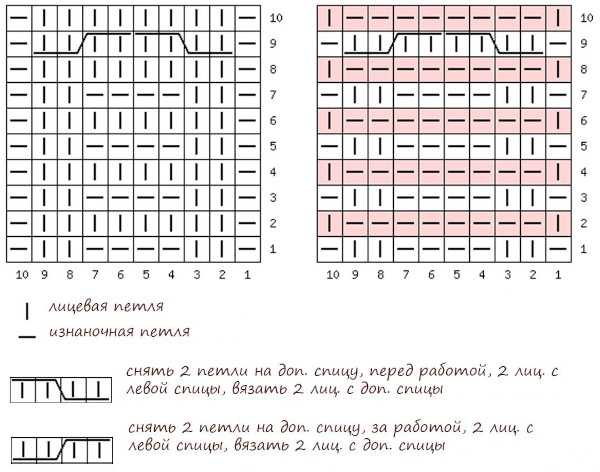
The description of the pattern is as follows:
- All rows (the pattern repeat consists of 10 rows) begin with an edge loop and end with it.
- In the 1st row, knit 2 front loops, 8 back loops, 2 front loops.
- In the 2nd row, knit 2 purl, 2 knit, 4 purl, 2 knit, 2 purl.
- In the 3rd row, knit 2 front and 8 back loops, 2 front loops.
- In the 4th row: 2 purl, 2 knit, 4 purl, 2 knit, 2 purl.
- In the 5th row - 2 front, 8 back, 2 front.
- In the 6th row, knit 2 purl, 2 knit, 4 purl, 2 knit, 2 purl.
- Row 7 - knit 2, 8 purl, 2 knit stitches.
- Row 8 - knit 2 purl, 2 knit, 4 purl, 2 knit, 2 purl.
- In the 9th row, knit 2 front loops, 8 back loops, 2 front loops.
- Row 10 - knit 2 purl stitches, cross 2 stitches to the left in turn, then 2 stitches to the right in turn. Knit 2 purl stitches.
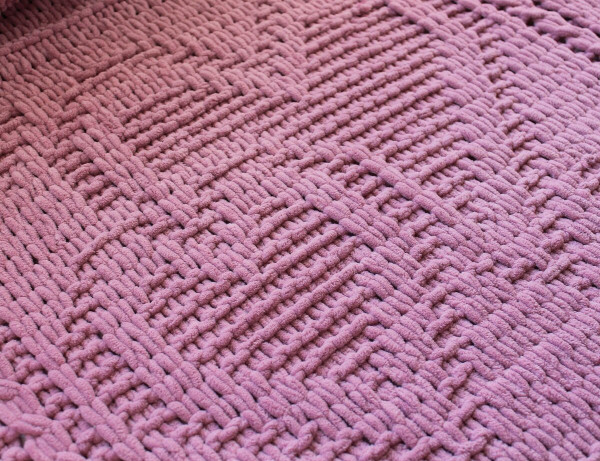
Shadow knitting is an opportunity to knit a beautiful blanket from plush threads. The essence of knitting is in the combination of basic loops used in knitting. The pattern appears in contrast, in the alternation of 2 types of loops.
For example, when creating a diamond pattern, you should knit the diamond itself with purl stitches and surround it with knit stitches.
Thus, when choosing a pattern for a blanket, it is necessary to focus not only on skills and abilities, but also on the type of pattern. For example, a braid pattern in a blanket made of plush yarn with knitting needles will look good. In addition, it is necessary to pay attention to the thickness of the yarn. If it is too thick, the pattern will look sloppy.
Video about knitting blankets from plush yarn
Baby plush blanket knitted:

